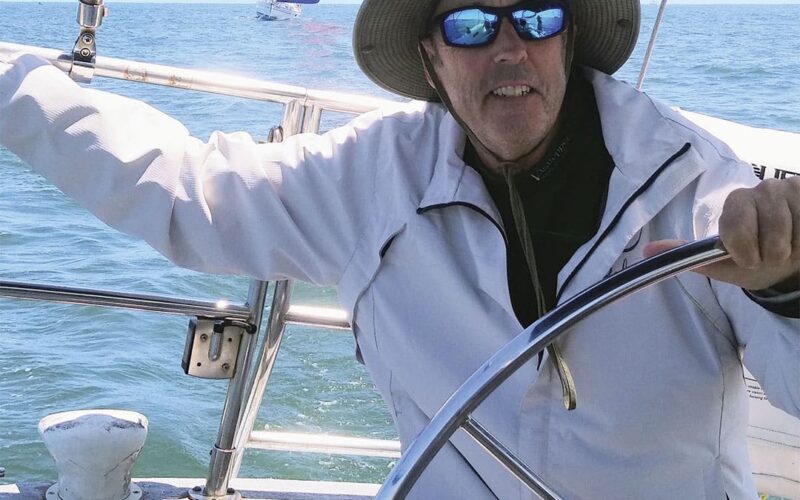There’s nothing quite like the feel of a tiller or wheel in your hands, that tactile sensation of flesh on wood as you steer the vessel to a distant waypoint. To me, this has always been the most rewarding part of sailing. With gentle movements of your fingers, the boat responds—silent, stealthy, ready to go anywhere there’s wind. Driving a boat is all about the senses, and the skilled sailor learns to use them all. The wind on your face, the angle of heel and the gurgle of water sliding past the hull all play a part in the ballet…
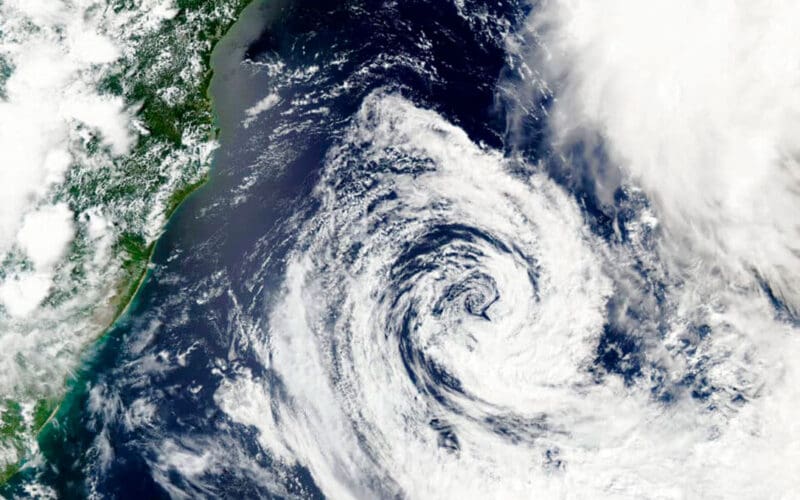
On Feb. 18, an area of low pressure just off the coast of Rio de Janeiro was identified by the Brazilian Navy Hydrographic Center’s Serviço Meteorológico Marinho as a subtropical depression. Two days later, it became a tropical depression and that evening was named Tropical Storm Akará. This was surprising news. Tropical storms are uncommon in the South Atlantic Ocean, leaving the impression they don’t exist. While there’s no official South Atlantic season, tropical weather does occasionally form between December and May during Southern Hemisphere summer and fall. NOAA’s Office of Satellite and Product Operations makes projections of tropical storm formation and gives positions…
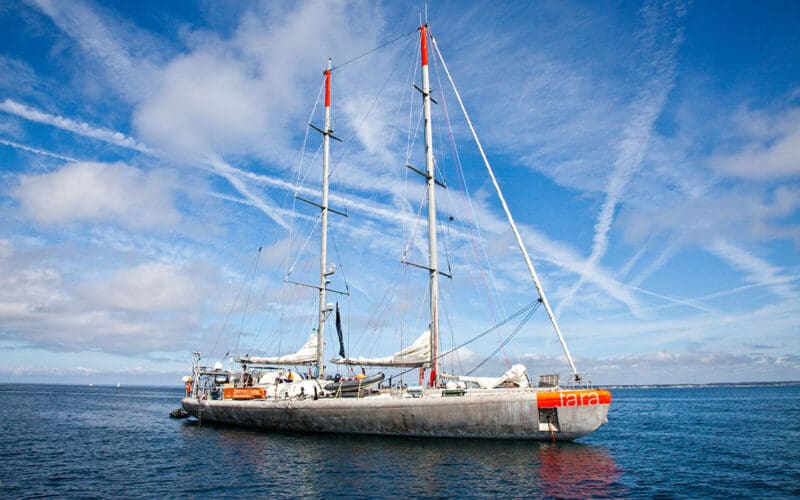
The top layer of our ocean is called the “Sunlight Zone.” At the surface and down to about 200 meters are live microscopic floating algae called “phytoplankton” that are critical to life. Voyagers on trans-ocean voyages can and do participate in the study of phytoplankton. More data is always better so data gathering by voyagers helps increase our knowledge of what’s happening with the world’s oceans. Now new gear from several companies can make gathering this data easier for voyagers. Plankton, from the Greek word planktos meaning wanderer, defines a lifestyle rather than a specific organism, and includes all water-borne organisms that…
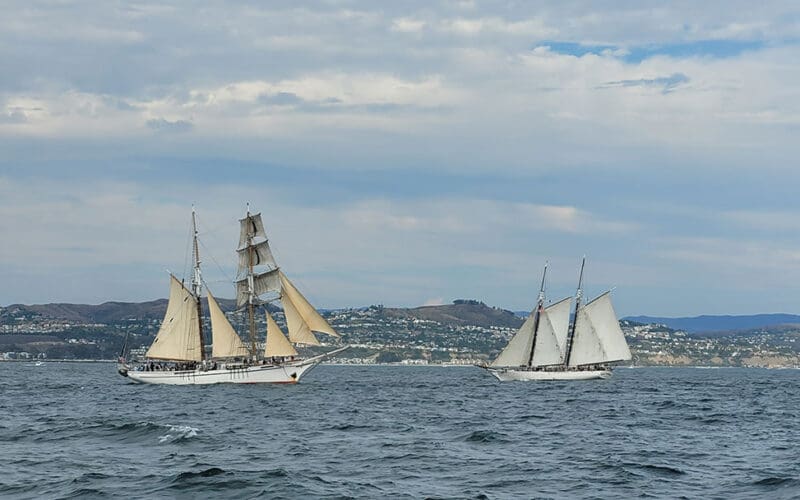
By Rob Laymon The three-day Dana Point Maritime Festival takes place every year in September. It’s a good specimen of the thing called a sail festival, that strange waterborne Saturnalia dear to the sailor’s heart. Other festivals take place in California, including in San Diego, sometimes sporadically, sometimes just once or twice. But the Dana Point festival has proved tenacious. Exy Johnson, the schooner I was captaining, had motor-sailed to the the Dana Point Sail Festival in southern California from San Pedro. We departed with our cannons all aglint and our cartridges packed. Two other boats from the Los Angeles…

Fog on the Maine coast is difficult to forecast accurately. If it descends mid-voyage you deal with it; fog that comes while still in harbor throws sailing plans into uncertainty. Early summer this year was foggy and rainy, but by the time we left for our three-week cruise on our Sabre 30, Ora Kali, the weather was warm and clear. At the end of August we reached our furthest destination west at Tenants Harbor and were departing east for home on Frenchman Bay. The decision to do so was given urgency because I wanted to get Ora Kali out of…
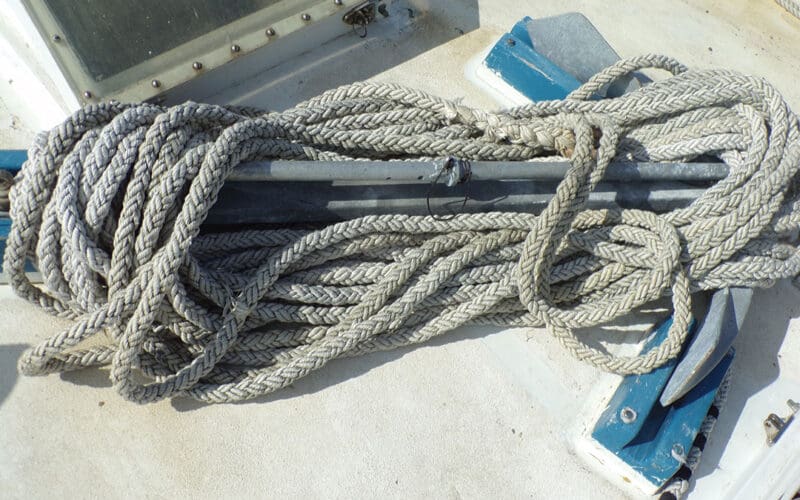
Having taken us two and a half years to build, we had just launched our 36-foot carvel-planked cutter when the bad news hit: a hurricane had formed and was quickly heading our way, targeting the area where our boat was berthed. Since the marina would have little to no protection from the wind and storm surge, we had to get this engineless boat up river, anchor, and then, with no ands, ifs or buts about it, stay put. We had already purchased our storm anchor, a 70-pound Luke (fisherman-style) anchor, and our main bower, a 50-pound SuperMax anchor, as well…
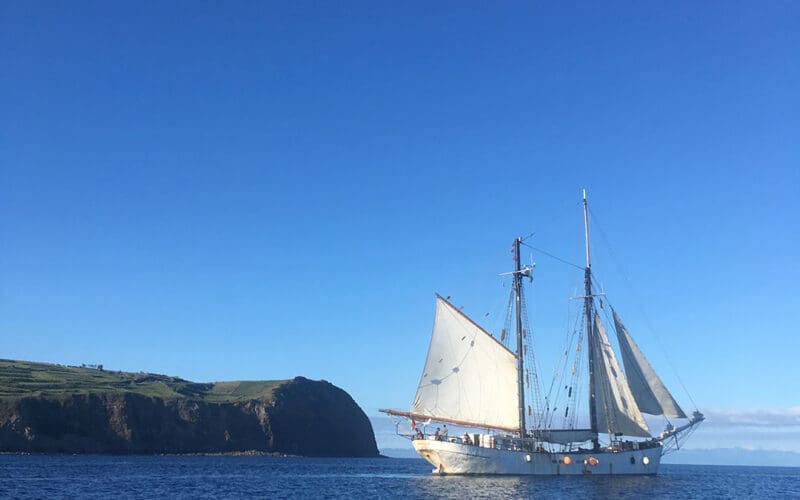
A hundred and fifty years ago big ships under sail crisscrossed the Atlantic Ocean, sailing south from Europe to cross on the trade winds then up the coast of the Americas to return on the westerlies. With current concerns over climate change driving the need to cut carbon from using fossil fuels, will we once again see fleets of ocean-going trading boats loaded down with flying canvas and no engines? A recent book, Trade Winds: A voyage to a sustainable future for shipping, by Christiaan de Beukelaer looks at the complex journey the shipping industry is on to cut its…
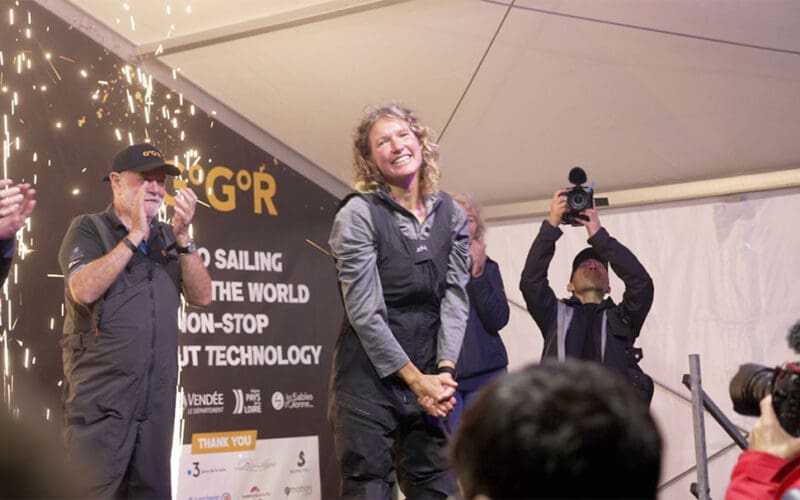
On the evening of April 27, Kirsten Neuschafer crossed the finish line at Sables-d’Olonne to win the 2022-23 Golden Globe Race. Of 16 sailors who began the round-the-world singlehanded race, only three were still in the running for the prize: Kirsten, Michael Guggenberger who was still well back in the Atlantic, and Abhilash Tomy, who finished a day and a half after Kirsten, a remarkable almost-photo finish after more than 235 days at sea. It’s been a busy year for circumnavigating races, beginning with the Ocean Race which, having dropped “Volvo” from its title, started off in January. Its seven…
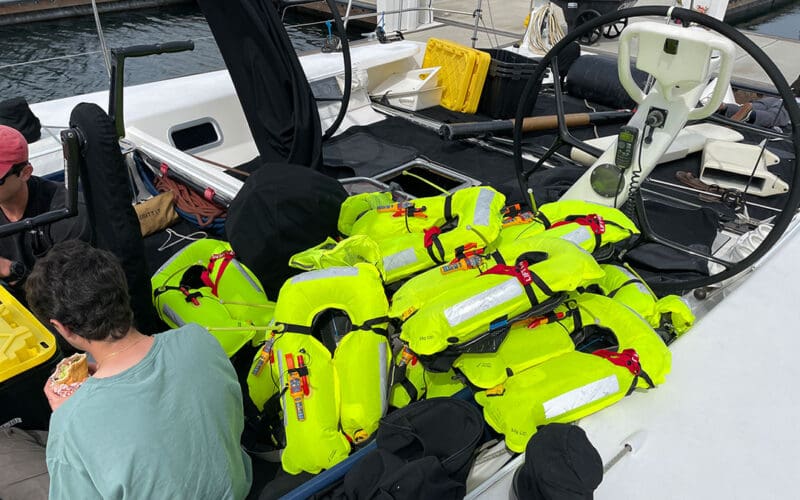
For any offshore voyage, making sure you have a seaworthy vessel and a safe crew before departure is paramount. The Transpac Race to Hawaii, a 2,225-mile ocean passage, is no different. The Transpac race committee takes this need for seaworthiness and safety seriously with a rigorous protocol to ensure boats and crews are ready. The race has a full complement of 21 inspectors on the west coast, from San Diego in the south to Seattle in the north, that conduct inspections to ensure that competing boats are in compliance with US Sailing’s Safety Equipment Requirements (SER) for ocean races. Though…
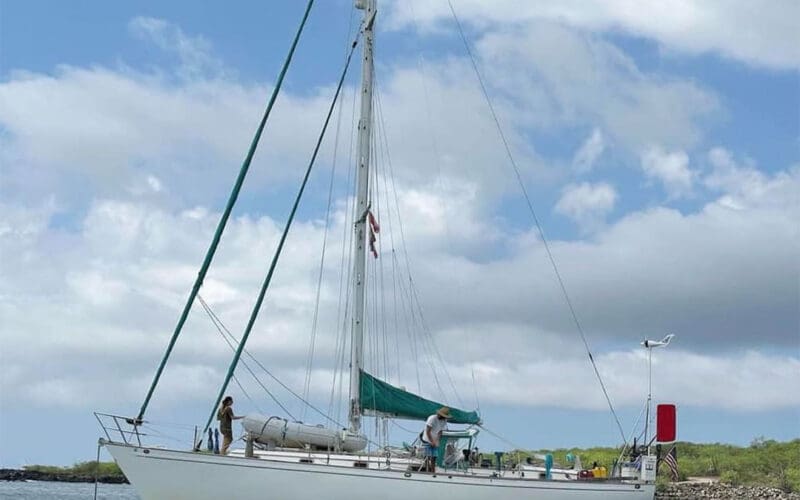
On March 13, on a South Pacific crossing midway between Galapagos and the Marquesas, s/v Raindancer with four people on board sank after an encounter with a whale. It was lunchtime and they had been in the cockpit eating pizza. In 15 minutes the boat, a Peterson 44, had slipped beneath the surface and the crew were surveying a sunny sea from the slim shelter of a liferaft and inflatable dinghy tied together. Before abandoning ship the crew gathered supplies and the captain, Rick Rodriguez, activated an EPIRB and sent out a mayday on VHF. Once in the liferaft they…

